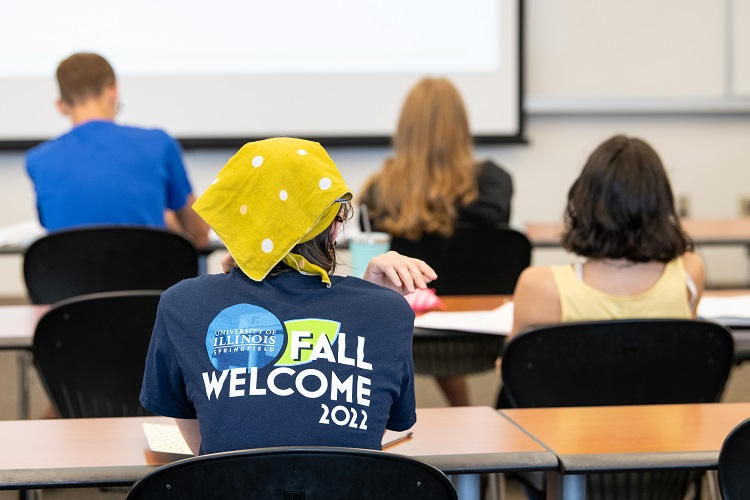
Welcome back as we start our new 2022-23 academic year!
I’m going to jump right in and address a topic that represents the ”Elephant in the Room” in any discussions about public affairs, public policy and politics today! It’s sure to be in the back of everyone’s minds in college classrooms, social events, legislative chambers, campaign events, nightly news, church gatherings, protests, street corners, coffee shops and maybe even across the family dining room table.
It involves the political volatility or outright violence being displayed between our two main political parties and zealous followers at both ends of the political spectrum. These heated opinions and views have always been a part of politics in the United States and elsewhere and have typically been relegated to the fringe elements of both Party structures. Despite that, political division has been real (and some might even include the Civil War in that division) and has taken the form of riots, fire bombings, strikes, protests, fisticuffs, standoffs, rhetoric flying over the airways, harassment, and even insurrection over the history of our Republic. Coming from all sides.
But in the year 2022, it seems that modern society would have reached the point where such overt and sometimes violent displays were just a product of our past and that civility in discourse prevailed and disagreements in politics were expected to be more rational and calm and informational. That conception of a working democratic system of government includes free and open elections, sound debates, peaceful protests, a free press, and majority rule with minority rights, education led by sound principles and not politics, reasoned analysis, and some inherent stability in civil discourse. However, today it seems we are “living on the edge.” In many respects democracy itself may be at stake. That is the “Elephant in the Room!” Let’s not run away from it.
I ran across some interesting data and survey results that unfortunately seem to bear this out. “Between 2017 and 2020, Democrats and Republicans were extremely close in justifying violence, with Democrats slightly more prone to condone violence—except in November 2019, the month before Trump’s first impeachment, when Republican support for violence spiked. Both sides also expressed similarly high levels of dehumanizing thought: 39 percent of Democrats and 41 percent of Republicans saw the other side as “downright evil,” and 16 percent of Democrats and 20 percent of Republicans said that their opponents were “like animals.” Separate polling found lower but still comparable levels: 4 percent of Democrats and 3 percent of Republicans believed in October 2020 that attacks on their political opponents would be justified if their party leader alleged the election was stolen; 6 percent of Democrats and 4 percent of Republicans believed property damage to be acceptable in such a case.”
In January 2020, 41 percent of Republicans agreed that “a time will come when patriotic Americans have to “take the law into their own hands”; a year later, after the January 6 insurrection, 56 percent of Republicans agreed that “if elected leaders will not protect America, the people must do it themselves even if it requires taking violent action.” Moral disengagement also spiked: By February 2021, more than two-thirds of Republicans (and half of Democrats) saw the other party as “downright evil,” while 12 percent more Republicans believed Democrats were less than human than the other way around.[1]
Ouch!!!
In our College we study and emphasize the rule of law, foundational public education, a democratic system of government, politics, public policy, international affairs, public management, and the role of the media and open and clear communications to name a few areas. I suggest our College and its students and faculty and alumni are best poised to reversing this tide of distrust, misunderstanding and conflict in politics today.
I would like to offer ten key interventions that might help defuse the threat of political violence in the United States (but also here in Illinois):
- Election Transparency
- Robust Electoral Rules Guaranteeing Free and Unobstructed Voting
- Bipartisan or Independent Monitoring of the Election Process
- Fraud Prevention in Balance with Access
- Equilibrium in Political Speech
- Civics Lessons Explaining Democratic Principles and Voting as a High School Requirement,
- More Political Debates and Public Forums Not Less
- Required News Coverage of all local and state elections
- Moving Election Technology (and Security) into the 21st Century (e.g., mobile phones, public kiosks, etc.)
- Improving our Overall Education System to better educate youth on Existing Norms and Process of Change in American Society
These may be controversial ideas and require further development, yet if Democracy is at stake – why not explore these interventions?
How we develop and advance and implement these “interventions” should be the basis of our attention before the next Presidential election (2024) and in the years ahead. These interventions equally apply to local and state and national leaders but remember they equally apply to you and me. What other interventions might you suggest?
Have a wonderful Fall Semester and find some time to think about your contribution to our Democracy!
Best,
Dr. Bob Smith
Dean
UIS College of Public Affairs and Education
___________
PLEASE NOTE: Survey data excerpts and reflections and interventions adapted from Rachel Kleinfeld who is senior fellow in the Democracy, Conflict, and Governance Program at the Carnegie Endowment for International Peace.
___________
[1] Kleinfeld, R. “The Rise of Political Violence in the United States”. Journal of Democracy, vol. 32, no. 4, Oct. 2021, pp. 160–76.


